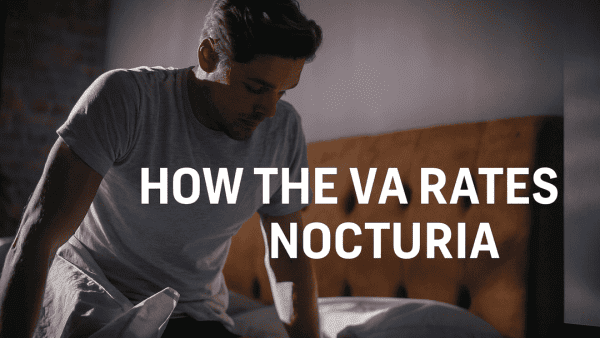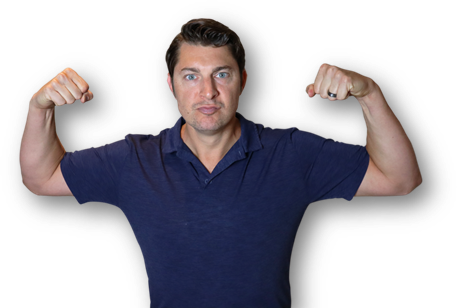Looking for Expert-Level VA Claim Answers?📱Call Us Now! 737-295-2226
If you are a veteran experiencing Postural Orthostatic Tachycardia Syndrome (POTS) you may be interested in learning how to secure a POTS VA disability rating to maximize your VA disability benefits.
Getting rated for a VA disability is straightforward for many medical conditions. However, POTS is a complex disorder that’s not explicitly listed in the VA’s Schedule of Rating Disabilities. The diverse symptoms and hard-to-identify causes of POTS often leave veterans wondering how to obtain the benefits they deserve.
Qualifying for the maximum POTS VA disability rating requires strong medical evidence, the ability to show service connection, and a strategic claims submission plan.
Continue reading to learn how to maximize your POTS VA rating.
Table of Contents
Summary of Key Points
- Postural Orthostatic Tachycardia Syndrome (POTS) is a form of dysautonomia (a condition where the autonomic nervous system—which controls bodily functions like heart rate and blood pressure—doesn’t work correctly).
- Common POTS causes include trauma, infections, autoimmune disorders, and nervous system dysfunction, many of which may be service-related.
- POTS doesn’t have a specific VA diagnostic code (DC), so the VA rates the condition analogously under its ratings for conditions such as supraventricular arrhythmias, chronic fatigue syndrome, or neurological disorders.
- POTS can be a standalone condition or secondary to another medical issue, such as traumatic brain injury (TBI), Gulf War Syndrome, or autoimmune diseases.
- POTS occurs when the heart rate increases by at least 30 bpm (40 bpm in adolescents) within 10 minutes of standing, often exceeding 120 bpm, in the absence of a significant drop in blood pressure.

What is Postural Orthostatic Tachycardia Syndrome (POTS)?
Postural Orthostatic Tachycardia Syndrome (POTS) is a form of dysautonomia (a condition where the autonomic nervous system—which controls bodily functions like heart rate and blood pressure—doesn’t work correctly). Dysautonomia causes dizziness, fainting, and rapid heart rate changes, often triggered by standing up.
POTS occurs when the heart rate increases by more than 30 beats per minute (over 120 bpm) after standing for 10 minutes without a significant decrease in blood pressure.
POTS is considered a syndrome (a group of symptoms that occur together, suggesting a specific disease). This condition impacts the body’s “autonomic nervous system,” which controls heart rate, blood pressure, and other involuntary functions of the body.
When you have postural tachycardia, the heart rate is faster than it should be when getting up from a supine (i.e., lying down) position.
To get diagnosed with POTS you must have specific symptoms and may undergo the “tilt table test.”
What is the Tilt Table Test?
A tilt table test reveals how the body physically reacts to changes in position. The test is used to find out what causes dizziness or fainting, particularly in instances where the cause of fainting is unknown.
Symptoms of POTS
An adult’s heart rate is usually around 70 to 80 beats per minute when the person is resting. When standing up, that rate goes up by around 10 to 15 beats per minute in a healthy person, then, shortly after, it decreases again.
If you have postural tachycardia syndrome, your heart may increase by as much as 50 beats per minute when you stand, causing lightheadedness, dizziness, or even fainting.
Other symptoms of postural tachycardia syndrome may include:
- Dizziness, lightheadedness, or fainting (i.e., syncope)
- Shortness of breath
- Tachycardia (rapid heart rate)
- Chronic (i.e., long-term) fatigue
- Brain fog
- Headaches
- Chronic pain
- Digestive problems (e.g., nausea, cramps, or other GI problems)
There may be considerable variation in these symptoms from one individual to another.
POTS and VA Disability
Your POTS VA disability rating depends on the severity of your symptoms and how they affect your ability to work and daily activities. Severe symptoms—such as severe, chronic (i.e., long-term) fatigue and frequent fainting episodes could qualify you for a higher VA rating.
Because POTS does not have a dedicated diagnostic code (DC), the VA rates it analogously (i.e., similar to other conditions), depending on the type and frequency of your symptoms. These DCs commonly include:
- Supraventricular arrhythmias – (i.e., irregular heart rate), DC 7010 — 10%-30% VA rating based on frequency of symptoms.
- Chronic fatigue syndrome – (a long-term illness with extreme fatigue, resulting in difficulty completing daily activities), DC 6354 — 10%-100% VA rating if fatigue is the primary disabling symptom.
- Neurological disorders (i.e., multiple sclerosis) DC 8018 — 30% to 100% VA rating if POTS symptoms cause significant functional impairment.
Cardiac Conditions (38 CFR § 4.104 – Schedule of Ratings for the Cardiovascular System)
Diagnostic Code 7010 (Supraventricular Arrhythmias):
- Confirmed by ECG, with five or more treatment interventions per year– 30%
- Confirmed by ECG, with one to four treatment interventions per year; or, confirmed by ECG with either continuous use of oral medications to control or use of vagal maneuvers to control—10%
Diagnostic Code 7011 (Ventricular Arrhythmias Sustained):
- For an indefinite period from the date of inpatient hospital admission for initial medical therapy for a sustained ventricular arrhythmia; or, for an indefinite period from the date of inpatient hospital admission for ventricular aneurysmectomy; or, with an automatic implantable cardioverter-defibrillator (AICD) in place —100%
Neurological Disorders (38 CFR § 4.124a – Neurological Conditions and Convulsive Disorders)
DC 8018 (Multiple Sclerosis, used for autonomic dysfunction cases)
- Minimum VA rating—30% and up to 100%, depending on the severity of symptoms.
Autonomic Dysfunction & Chronic Fatigue Syndrome (CFS) (38 CFR § 4.88a – Infectious Diseases, Immune Disorders, and Nutritional Deficiencies)
Sometimes POTS symptoms are a type of partial dysautonomia. As a result of dysautonomia, parts of the nervous system controlling the heart, intestines, blood vessels, bladder, and other organs fail to communicate effectively with these organs. In this scenario, the VA rates POTS under CFS and autonomic dysfunction as follows:
- Which are nearly constant and so severe as to restrict routine daily activities almost completely and which may occasionally preclude self-care—100% VA rating
- Which are nearly constant and restrict routine daily activities to less than 50 percent of the pre-illness level; or which wax and wane, resulting in periods of incapacitation of at least six weeks total duration per year—60% VA rating
- Which are nearly constant and restrict routine daily activities from 50 to 75 percent of the pre-illness level; or which wax and wane (i.e., come and go), resulting in periods of incapacitation of at least four but less than six weeks total duration per year—40% VA rating
- Which are nearly constant and restrict routine daily activities by less than 25 percent of the pre-illness level; or which wax and wane, resulting in periods of incapacitation of at least two but less than four weeks total duration per year—20% VA rating
- Which wax and wane but result in periods of incapacitation of at least one but less than two weeks total duration per year; or symptoms controlled by continuous medication—10% VA rating
Keep in mind that according to the VA’s “Pyramiding Principal,” a symptom can only be rated once. For example, if you have dizziness from your POTS but experience it from another condition, such as Ménière’s disease or migraines, you will not be given an additional rating for your POTS dizziness.
You DESERVE a HIGHER VA rating.
Take advantage of a VA Claim Discovery Call with an experienced Team Member. Learn what you’ve been missing so you can FINALLY get the VA disability rating and compensation you’ve earned for your service.
Proving Service Connection
Military service is not the sole cause of POTS syndrome; however, certain military activities may contribute to or exacerbate (i.e., worsen) POTS, including:
- Physical Stress and Trauma: Physical training, combat situations, and injuries sustained during service may trigger chronic stress responses of the autonomic nervous system.
- Heat Exposure: Undergoing rigorous physical activity during basic training or other military operations—particularly in a hot climate—can exacerbate POTS symptoms. When the body overheats, it cools itself by dilating blood vessels, lowering blood pressure, and triggering the autonomic nervous system to compensate by increasing heart rate.
- Infections and Illnesses: Infectious disease exposure or chronic illnesses during your military service could trigger immune responses that impact autonomic function.
- Environmental Toxins: Veterans who served in certain areas during specific periods could be exposed to environmental toxins affecting neurological and autonomic nervous system function.
- Chronic Stress and PTSD: High levels of stress and anxiety, such as in post-traumatic stress disorder (PTSD) may impact autonomic nervous system function and contribute to POTS.
3 Components Need to Prove Service Connection
You must establish service connection for POTS to qualify for VA disability benefits. There are three essential components to this process including:
- A Current POTS Diagnosis: A formal POTS medical diagnosis from a qualified provider, supported by heart rate monitoring tests (e.g., tilt table test)
- An In-Service Event or Aggravation: Evidence that symptoms started or worsened due to your military service, such as exposure to environmental toxins, Gulf War Syndrome, a traumatic injury during your military service, or a prior service-connected disorder that caused or worsened your POTTS symptoms, such as PTSD.
- A nexus (or link) connecting #1 and #2 above, via competent medical evidence
A medical opinion from a doctor linking your POTS to service-related factors, such as a strong Nexus Letter, is not mandatory, but it may significantly increase the likelihood of a VA disability rating approval.
Secondary Service Connection for POTS
Secondary service connection can grant you disability for your POTS if you can show that another service-connected condition caused or worsened your POTS symptoms.
If POTS is secondary to a primary service-connected condition, you can file a secondary claim with medical evidence—such as a Nexus Letter—explaining that your POTS is “at least as likely as not caused or aggravated by your primary service-connected disorder.”
POTS could qualify as a secondary condition linked to a primary service-connected disability, such as:
- Gulf War Illness (Gulf War Syndrome) – a wide range of symptoms affecting Gulf War veterans.
- Autoimmune disorder
- Certain autoimmune disorders (e.g., rheumatoid arthritis, lupus, and multiple sclerosis)
A 2014 study discovered that compared to veterans with no mental disorders, veterans with PTSD had a significantly higher risk for any of the autoimmune disorders than those without mental health disorders.
Final Thoughts
A VA disability rating for POTS requires substantial medical documentation, proof of service connection, and a strategic planning approach to enable your claim submission to align with the best rating criteria. A well-thought-out POTS claim considers the importance of applying under the most applicable VA diagnostic code (DC).

(FAQs) Frequently Asked Questions
Is POTS a VA Disability?
Yes. Postural Orthostatic Tachycardia Syndrome (POTS) can be considered for VA disability, but your claim could involve more complexity than many other types of VA disability claims. The VA compares POTS to conditions with similar symptoms and it’s essential to apply under the most applicable VA diagnostic code (DC).
Can I get a 100% VA rating for POTS?
Yes, but it depends on your symptom severity and other factors. If POTS results in total disability, inability to work, or severe autonomic dysfunction, a 100% VA rating may be assigned under the neurological or cardiac conditions categories of the VA Schedule of Ratings Table.
Can POTS qualify for Total Disability Individual Unemployability (TDIU)?
Yes. If POTS prevents you from maintaining substantial gainful employment, and you meet the other VA disability requirements, you may be eligible for TDIU benefits, which reimburses veterans at a 100% disability rate.
Want Expert-Level Support with Your VA Disability Claim? WE GOT YOUR SIX!
How does VA Claims Insider help veterans?
We make the confusing and frustrating VA claim process EASY through our 8-step proprietary system and one-on-one coaching; we’re the VA Claim EXPERTS you can trust, and YOU are never alone in this fight against the VA!
You’ll also receive VA disability expert Brian Reese’s SEM Method Blueprint—a proven formula that has helped over 25,000 veterans win their VA disability claims faster:
Strategy + Education + Medical Evidence = VA Rating and Compensation You Deserve FASTER!
Start today and unlock an exceptional level of service you deserve for serving our country:
- You’ll hear from a VA Claim Expert over email within 15 minutes of signing up today.
- You’ll hear from your Veteran Coach team within 24 hours of all inquiries during normal business days/hours.
- Our terms are clear and simple: If we don’t win, you don’t pay. You have nothing to lose and everything to gain.
Click the red button below to start the process of winning your VA claim right now!
Veterans: Are You Ready to WIN, SERVICE-CONNECT, and INCREASE Your VA Rating FASTER?

- VA Claims Insider is the #1 most trusted name in VA disability claims.
- Work directly with a VA claims coach who can help lead you to VA claim victory.
- 25,000+ disabled veterans served in our membership programs since 2016.
- 30% average rating increase for veterans who complete our #1 rated Elite program.
- 4.7/5.0 average rating out of 5,500+ total reviews; over 4,500 5-star reviews.
About the Author

Sherry Christiansen
Sherry Christiansen is a professional Medical Writer with a clinical mental health background. Over the last decade, she has written health and wellness articles for organizations like Medical News Today, Verywell Health, and Healthline. In 2013, she also helped launch an educational website for the first Alzheimer’s prevention clinic in the country at Weill Cornell Medical Center – NewYork-Presbyterian. As a spouse of a career military service member, Sherry is deeply passionate about supporting veterans. It is an honor for her to assist veterans in receiving the benefits they deserve after becoming ill or injured while serving our country.



